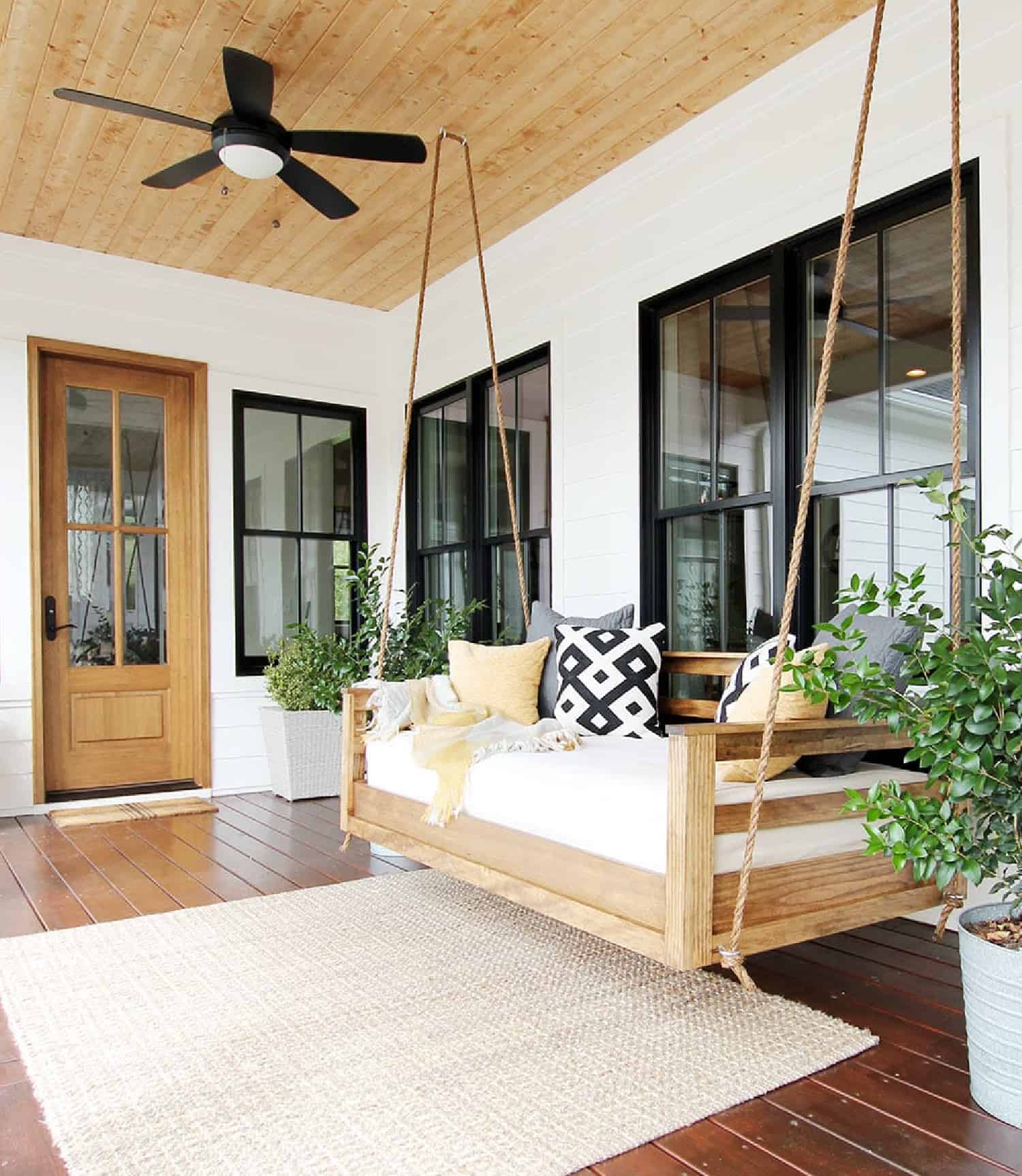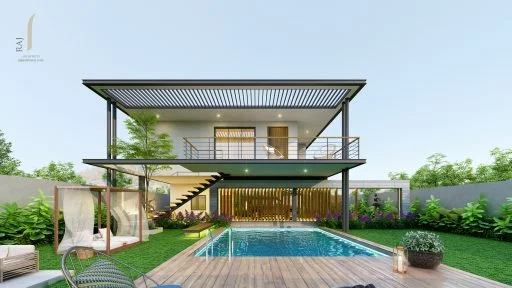Farmhouse design has become one of the most beloved interior and architectural styles in recent years. Rooted in history but perfectly adaptable to today’s modern lifestyle, the farmhouse aesthetic brings together rustic charm, cozy textures, and a timeless appeal. Whether you live in the countryside or the heart of the city, farmhouse design allows you to create a warm, welcoming home that feels both stylish and comfortable. In this guide, we’ll dive deep into the core elements of farmhouse design, explore modern variations, and give you inspiration to bring this look into your own space.
What Makes Farmhouse Design Unique?

Farmhouse design isn’t just about looks—it’s a lifestyle. At its core, this design style emphasizes practicality, warmth, and a connection to nature. Unlike other interior trends that focus heavily on luxury or sleek minimalism, farmhouse design values comfort and functionality.
One of the most unique aspects of farmhouse design is its ability to blend old and new seamlessly. You’ll often see vintage furniture pieces sitting beside modern fixtures, or reclaimed wood paired with sleek stone countertops. This mix creates an inviting atmosphere that feels authentic, lived-in, and deeply personal. It’s less about following strict design rules and more about creating a space that reflects your story and personality.
Another factor that sets farmhouse design apart is its versatility. There’s no single way to achieve the farmhouse look. Some prefer the traditional rustic approach, while others lean toward a more modern farmhouse vibe that feels airy and contemporary. The beauty of this design lies in its adaptability—you can tweak it to fit your home, budget, and taste.
Key Elements of Farmhouse Design
Every design style has its signature elements, and farmhouse design is no exception. These foundational features help create the aesthetic while keeping spaces cozy and functional.
First, natural materials play a central role. Think reclaimed wood, stone, brick, and metal accents. These materials add character and texture while also grounding the home in earthy tones. They’re also highly durable, making them practical choices for everyday living.
Second, farmhouse design embraces neutral color palettes. Whites, creams, beiges, and soft grays dominate the walls and furniture, creating a calming backdrop. Pops of color, often in muted shades like sage green, navy, or rustic red, are added through accessories, textiles, or accent walls. This balance keeps the design warm without overwhelming the senses.
Lastly, farmhouse interiors often feature open layouts and communal spaces. Kitchens flow into living areas, creating a natural hub for gatherings. Large tables, oversized couches, and cozy nooks encourage family and friends to come together, which is exactly what farmhouse living is all about.
Traditional Farmhouse Design: Rustic and Cozy
The traditional farmhouse design style takes its cues from rural homes of the past. It’s a look that leans heavily on rustic elements and cozy charm, creating a warm, lived-in atmosphere.
One of the hallmarks of this style is the use of reclaimed or weathered wood. Exposed beams, wide-plank flooring, and distressed furniture all contribute to a sense of history and character. These materials aren’t meant to look perfect—in fact, imperfections are what make them beautiful. Scratches, dents, and uneven finishes only add to the charm.
Another key feature of traditional farmhouse design is the furniture. Pieces are often large, sturdy, and practical. You’ll see oversized dining tables designed to seat the whole family, chunky wooden chairs, and vintage cabinets filled with heirloom dishes. Soft textiles like plaid throws, quilted blankets, and linen curtains add a cozy finishing touch.
Lighting in traditional farmhouses often leans toward lantern-style fixtures, wrought iron chandeliers, or simple sconces that mimic candlelight. Combined with natural daylight streaming through large windows, these features create a space that feels warm and inviting no matter the season.
Modern Farmhouse Design: Clean and Contemporary
While traditional farmhouse design celebrates rustic charm, the modern farmhouse look takes the same principles and gives them a fresh, contemporary twist. It’s perfect for those who love the farmhouse aesthetic but want something more streamlined and polished.
Modern farmhouse interiors often feature crisp white walls, clean lines, and open layouts. Shiplap walls, a classic farmhouse detail, are often painted white for a more minimalist vibe. Instead of distressed furniture, you’ll find sleeker pieces with simple silhouettes, often in black, natural wood, or soft neutrals.
One standout element of modern farmhouse design is the balance between rustic and industrial. Black metal accents, matte finishes, and minimalist lighting fixtures are commonly used alongside warm wood tones. This creates a chic contrast that feels both timeless and on-trend.
Kitchens in modern farmhouse homes often become the star of the show. Large islands, farmhouse sinks, and a mix of open shelving and cabinetry are staples. Add in modern appliances and statement lighting, and you have a space that is both functional and stunning.
Farmhouse Exteriors: Curb Appeal with Character
When it comes to farmhouse design, the exterior of the home is just as important as the interior. Traditional farmhouses were designed to blend seamlessly into rural landscapes, and that same principle holds true today.
A classic farmhouse exterior often features wide porches, pitched roofs, and simple, symmetrical facades. The porch is a defining element—it’s not just decorative but also practical, providing a space for relaxation, socializing, or enjoying the view of your surroundings.
Materials also play a big role. White clapboard siding is a classic choice, but modern variations may use board-and-batten, brick, or even stone accents. Black window frames and metal roofs are popular in modern farmhouse designs, offering a striking contrast that adds to the curb appeal.
Landscaping is another essential feature of a farmhouse exterior. Instead of perfectly manicured lawns, you’ll often find wildflowers, gardens, or even small orchards that feel natural and unpretentious. It’s about creating harmony between the home and the land.
Bringing Farmhouse Design Into Your Home
Even if you don’t live in a farmhouse or countryside property, you can still bring the farmhouse aesthetic into your space. With a few thoughtful choices, you can transform your home into a cozy retreat that reflects this timeless style.
Start small by introducing farmhouse-inspired accessories. Mason jar vases, vintage signs, woven baskets, and rustic wooden trays can instantly add charm. Layering textures through rugs, throws, and pillows is another easy way to bring warmth into your space.
If you’re ready for bigger changes, consider upgrading furniture or finishes. Swap out a standard coffee table for a reclaimed wood piece, or replace your kitchen sink with a classic apron-front farmhouse sink. These upgrades may seem small, but they make a big impact on the overall look and feel.
Lastly, don’t forget about lighting. Swapping in farmhouse-style light fixtures can completely transform a room’s atmosphere. Pendant lights over a kitchen island or a wrought-iron chandelier in the dining room instantly create a farmhouse vibe.
Why Farmhouse Design Remains Timeless
Design trends come and go, but farmhouse design has proven to have lasting power. Its appeal lies in its balance of practicality and beauty—it’s a style that feels approachable, livable, and endlessly adaptable.
The emphasis on natural materials and craftsmanship ensures that farmhouse interiors never feel artificial or overly trendy. Instead, they celebrate the beauty of imperfections and the charm of everyday living. This authenticity is a big reason why so many people are drawn to the style.
Furthermore, farmhouse design connects people to a sense of tradition and nostalgia. Even if you’ve never lived on a farm, the style evokes feelings of simplicity, family, and comfort. It’s a reminder of slower living in an increasingly fast-paced world.
Conclusion
Farmhouse design is more than just an aesthetic—it’s a way of creating spaces that feel welcoming, practical, and timeless. Whether you prefer the rustic charm of traditional farmhouses or the sleek elegance of modern variations, this style offers endless possibilities to suit your taste. By incorporating natural materials, cozy textures, and thoughtful details, you can bring farmhouse charm into any home, no matter where you live.
At the end of the day, farmhouse design isn’t about perfection—it’s about creating a home that feels lived-in, loved, and authentically yours. And that’s why it continues to stand the test of time.

